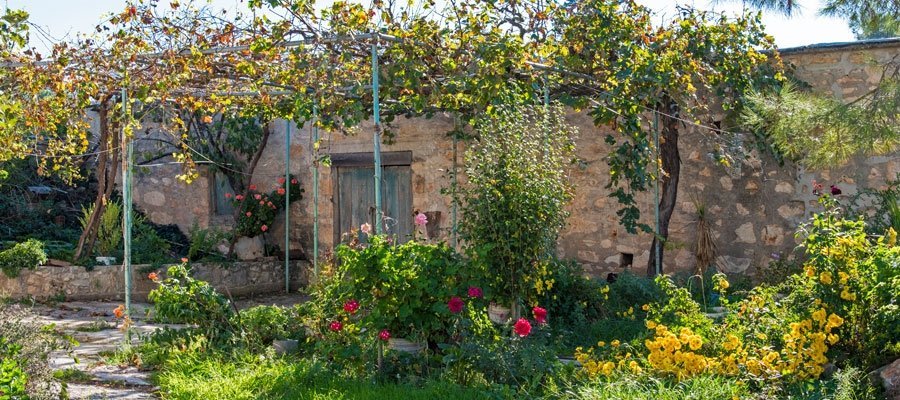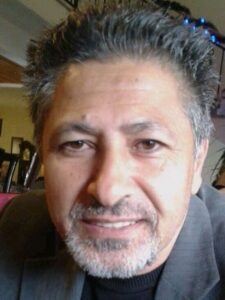But longer term issues threaten survival
Rural communities in Paphos say the pandemic has helped to highlight the benefits of living in the countryside as day-to-day life ‘hasn’t changed that much’.
However, nothing can disguise the continued existential threat to life in villages like Inia, Paphos.
People are still able to work outside, take daily exercise by walking in the countryside and are generally happy, officials and residents of Inia village told the Sunday Mail.
“It is much better to be living in a village like Inia during this period as we’re not as restricted, people can go to their fields and land, but if it happens that there is no income, then it will be fatal,” said Inia community leader, Yiangos Tsivicos this week.
Inia is a prime example of rural depopulation and is now one of the villages earmarked to be included in the government’s new incentive scheme to encourage young families to live there.
Currently, options for younger families in the village are practically zero and Tsivicos said incentives, such as the recent plan announced by the government, is a good starting point.
The scheme now includes 258 communities in total. Beneficiaries, among other things, will be entitled to financial assistance of up to €55,000 and additionally up to €15,000 for special construction (such as retaining walls), and up to €10,000 for people with disabilities, according to the minister of the interior, Nicos Nouris.
“For the first time we (Inia) are included in such a programme and it will benefit us a lot. It will give a motivation for young couples to stay in the village, as they will get a grant of 50,000 euros or so from the government to help build a house here,” the community leader said.
In addition, a plan by the deputy ministry of tourism aimed at boosting rural and mountain tourism has also been announced.
It aims to create a better experience for visitors and increase the number of local and foreign tourists to areas like Inia.
Communities can submit their requests for upgrades that will be subsidised by the government. These will include renovating old buildings and promoting local arts and traditions.
However, this could all be in vain if the Akamas issue is not concluded and the green light is given for some sort of development in certain areas, he said.
Inia covers large swathes of land, he noted, and as the Akamas problem has dragged on for 32 years, during this time land has decreased in value to practically zero.
“This is one of the reasons that young people moved away. Development was not allowed, there has been no new businesses, no jobs for young people and this results in everyone leaving.”
Since 1989, large areas of the Akamas, which includes Inia, were declared as an area with zero building factor, so all development was banned.
No compensation has been given to the owners, nor has anything been done to help, such as exchange or expropriation, he said.
A controversial national park is due to finished next year, but will only include state land.
“We really need strong incentives to convince young people to stay or even return to their villages,” he said.
Inia has a population of around 400-500 permanent residents, he said, but most are pensioners and fewer than ten are young families. They work in either Paphos or Polis, he said. And although the school is open, student numbers are low, even below the minimum requirement, he said.
There are currently only six children in kindergarten and fourteen in the primary school.
Andreas Stephanou,40, lives in Paphos and his father is from Inia, but he left a number of years ago to pursue work and married and settled in Paphos.
Although Stephanou has land in Inia where he would like to build a house, it’s not a practical place to live permanently at present, he said.
“If I could go back to Inia I would, but it’s not so easy, and even though it’s not so far from Paphos, it’s still a way to travel every day to work.”
The main priority would be his children as they grow up and need to attend a secondary school and outside lessons.
“Who would take them to Paphos or Polis as they get older. Also, there isn’t much for them to do there. If there was a bus it would help, but they would get tired of doing this every day.”
Even though Stephanou enjoys working the land, it is not so for every couple and he also raised the point that farmers’ incomes have been slashed and money is needed to buy and invest in equipment such as a tractor.
“There is only one supermarket in the village. You could be very organised and buy other items in Polis or Paphos, so there are solutions, but they are not easy.”
The previous community leader, Savvas Charalambous, agrees that more needs to be done to encourage people to move to the village before it’s too late and rural life dies out. He is a farmer whose land is found close to Lara beach.
“Proper plans need to be put in place to encourage young people to stay in Inia or move here. Careful development and plans such as those I suggested like wind and solar farms would create jobs,” he said. “Even though life goes on much the same during this pandemic and we are lucky to be more free than the cities, we still need to plan for the future.”
Charalambous still works outside every day and enjoys it.
“I couldn’t imagine being anywhere else. It’s so beautiful. We have the best beach, mountains and forest, I just wish the young people felt the same.”








Click here to change your cookie preferences